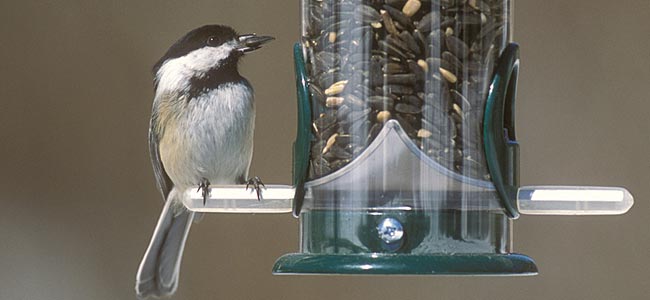One Siskin Is a Surprise; a Hundred Thousand Are a Revelation
April 20, 2010





One unexpected bird at your feeders may be a surprise. But thousands of unexpected birds across your region are a revelation. At Project FeederWatch, everyday sightings combine for rare insights.
In some winters, your feeders may be overrun by Pine Siskins —small, streaky finches with a lemon-yellow flash in the wings. These birds occasionally leave the forests of boreal Canada and spread across the continent from the Pacific Northwest to the Gulf Coast. Siskins by the millions can move south, many of them appearing at backyard feeders. Some siskins even nest as early as February, and members of the Cornell Lab’s Project FeederWatch have reported seeing young siskins as early as March.
Immense movements of siskins or redpolls or nuthatches may pass unnoticed if not for the efforts of thousands of citizen scientists—people just like you, armed with binoculars, a bird feeder or two, and a desire to help.
Conservation science isn’t confined to lecture halls; it lives outdoors, in the field and forest. Without the help of thousands of bird watchers, scientists simply couldn’t see patterns that stretch across a continent. Here in Ithaca, New York, our scientists may notice more (or fewer) birds in their own backyards. But to understand how bird populations are changing at the vast spatial scales that are relevant to the birds, we need your help.
Project FeederWatch is a leading example of the Cornell Lab of Ornithology’s efforts in citizen science. Since the program began in 1987, FeederWatchers have submitted millions of checklists from more than 50,000 locations across North America. Their data have helped track the spread of diseases such as West Nile virus and House Finch eye disease, document the rapid colonization of Eurasian Collared-Doves in North America, and charted an alarming, continent-wide decline in Evening Grosbeaks.
Help us help the birds outside your window. If you enjoy the birds at your feeders, Project FeederWatch is a perfect way for you to help. FeederWatch participants report the birds they see in their backyard as often as every week from November to April. We’ll give you resources to help with tricky identifications, so you can participate even if you’re fairly new to bird watching. Back at the Cornell Lab, your checklists become part of a vast dataset that simply couldn’t be assembled any other way.
Project FeederWatch is just one way to turn your hobby into help for the environment. There’s a citizen-science project for any season, any observer, any level of effort, including once-a-year Great Backyard Bird Count, summertime NestWatch, and eBird for round-the-clock reports. You can also help by becoming a member of the Lab. Won’t you join us?
All About Birds
is a free resource
Available for everyone,
funded by donors like you
American Kestrel by Blair Dudeck / Macaulay Library





